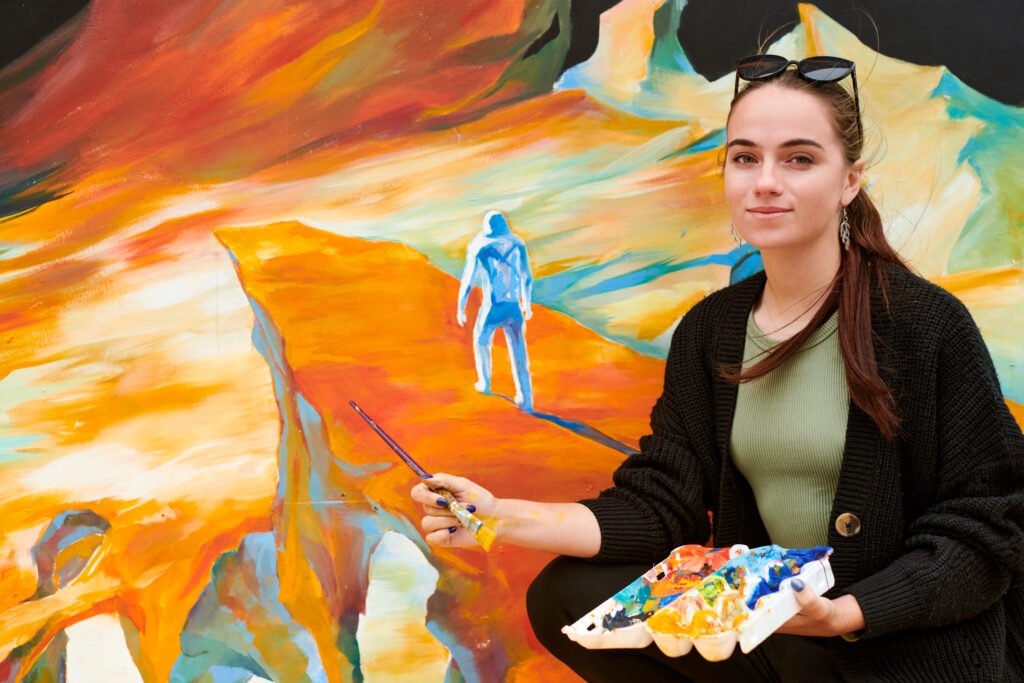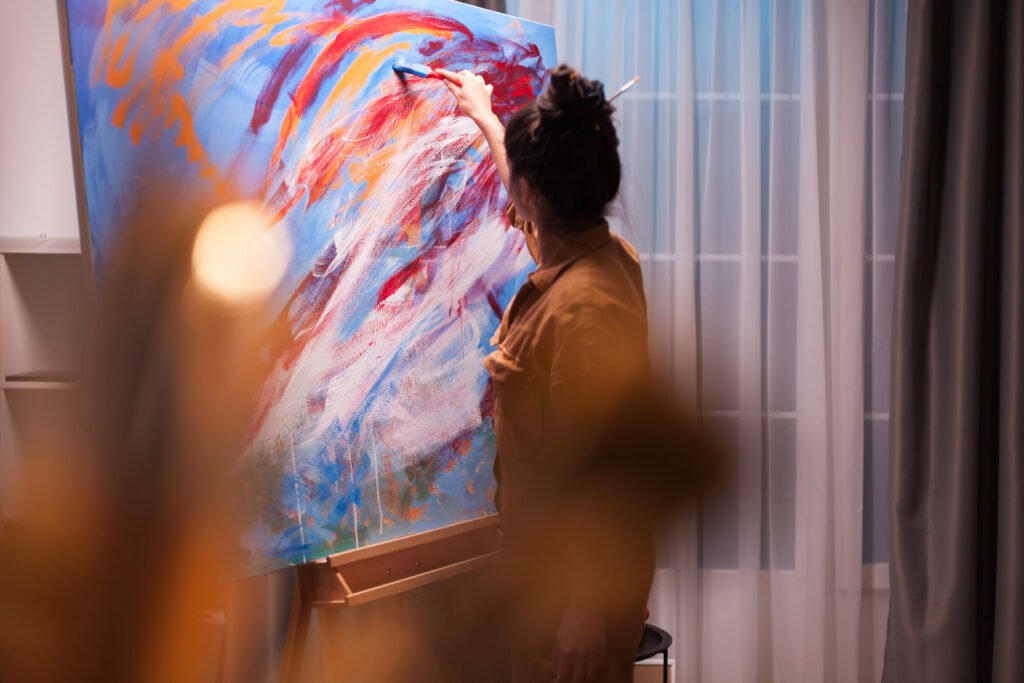Contemporary art is known for its diversity of forms, techniques, and languages. Amid this multiplicity, abstract art continues to hold a central place—even with the emergence of new aesthetics and technological approaches.
Many might assume that abstraction belongs solely to the 20th century, but it remains alive, constantly adapting and engaging with the present. Its strength lies not only in its visual form but in the freedom of interpretation it offers the viewer.
The absence of recognizable figures or an explicit narrative allows abstract art to work directly on the viewer’s sensations, emotions, and perceptions. In an era marked by information overload and complex social debates, this form of expression remains relevant by offering an open, sensory, and often deeply subjective aesthetic experience. For this reason, it remains essential in 21st-century art.
The Roots of Abstract Art and Its Transformation in the Contemporary Context
Abstract art emerged in the early 20th century as a break from figurative tradition. Artists such as Wassily Kandinsky, Kazimir Malevich, and Piet Mondrian sought to explore pure forms, bold colors, and compositions that did not imitate the visible world. This shift represented a true revolution, as it freed art from the obligation to represent something concrete, allowing it to exist on its own—as form, rhythm, and emotion.
However, abstraction did not remain confined to the past. As contemporary art evolved, abstraction also transformed. It moved beyond being a spiritual or formalist pursuit and began to incorporate new intentions and materials. Today, abstract art appears in immersive installations, digital projections, performances, and urban interventions, preserving its essence while expanding its possibilities.

Moreover, the contemporary context gives new meaning to abstraction. In a world overwhelmed by images, symbols, and messages, the visual silence of abstraction can serve as an invitation to pause, to contemplate, and to reconnect with sensitivity. Abstract art remains relevant because it offers an escape from logic, discourse, and sensory saturation. It fits perfectly within contemporary art’s focus on experience and interpretive freedom.
Abstraction has also become more democratic in the 21st century. One no longer needs to visit a museum to encounter abstract works. They can be found on city walls, in alternative galleries, in digital exhibitions, and even in the visual language of brands and products. This widespread presence increases its accessibility without diminishing its depth.
Why Abstract Art Continues to Captivate Artists and Audiences
One reason abstract art remains central to contemporary production is its adaptability. It can be minimalist or chaotic, geometric or gestural, analog or digital. This flexibility allows artists to use it to express emotions, reflect on the present, or simply propose new relationships with space. There is no single path within abstraction, making it fertile and inexhaustible.
From the audience’s perspective, abstract art challenges the senses and stimulates perception. Rather than telling you what it is, it invites interpretation. This openness makes each encounter with the artwork a unique experience. What someone sees today may differ from what they see tomorrow. This creates a personal, emotional bond that endures across time and context.
Another key point is that abstract art, even in its apparent simplicity, demands technical mastery and sensitivity. It is not a lack of content but rather a complex form of communication that occurs beyond words. In many cases, it conveys deep issues related to identity, memory, silence, or chaos—without directly representing these themes.
In contemporary production, it’s common for artists to blend languages. Abstraction is often combined with figurative elements, text, objects, and sound. This hybridization keeps abstract art in a state of constant reinvention, connecting it to other forms of expression and expanding its relevance in the current artistic landscape.
Ultimately, the centrality of abstract art in contemporary practice reflects the enduring need for spaces where imagination can operate without limits. In a world saturated with explicit images, abstraction invites mystery, uncertainty, and freedom. And that’s precisely why it continues to be so necessary and present in the artistic panorama of the 21st century.



